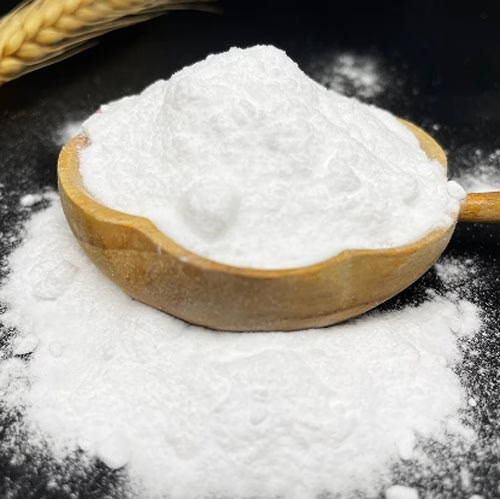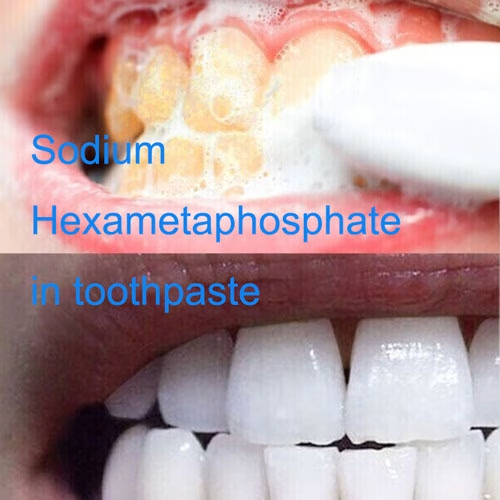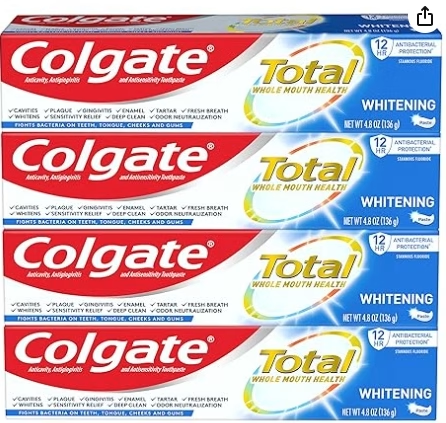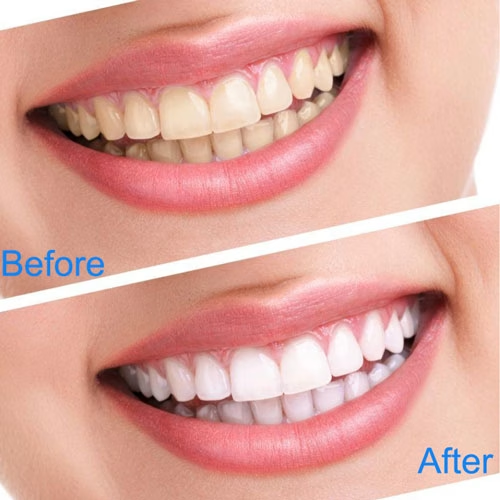I. Introduction
Sodium hexametaphosphate is an inorganic compound with the chemical formula (NaPO3)6, a white crystalline powder that is soluble in water and insoluble in organic solvents. It is mainly used in toothpaste to clean and whiten teeth, and can effectively disintegrate exogenous pigments, such as tobacco stains, yellow teeth caused by poor water quality, and yellow tartar caused by poor hygiene habits. Sodium Hexametaphosphate has a remarkable cleaning effect and can form a protective film on the surface of teeth to prevent pigmentation. It also has a good adsorption effect and can form a protective film on the teeth, distinguishing it from ordinary friction fluoride toothpaste.

II. Sodium hexametaphosphate in toothpaste
a. Enhance tooth resistance to acid corrosion and promote tooth remineralization:
sodium hexametaphosphate can strengthen the resistance of teeth and prevent caries and periodontal diseases.
b. Whitening teeth:
Sodium Hexametaphosphate effectively removes these exogenous pigments and restores bright white teeth. Sodium Hexametaphosphate can effectively disintegrate exogenous pigments, especially those caused by tooth stains other than those caused by diet (e.g. cola, coffee, tea, etc.), tobacco stains, and yellowish tartar caused by long-term non-brushing. It cleans the surface of the teeth, prevents pigmentation and makes the teeth whiter.
Some studies have shown that toothpastes containing sodium hexametaphosphate and sodium tripolyphosphate can make the acquired film on the surface of dentin have a more open structure, which will allow the coloring agent to be easily discharged.
Sodium hexametaphosphate is easily soluble in water and can form a protective film on the surface of the teeth, preventing the deposition of pigments on the surface of the teeth, thus keeping the teeth white.

c. Reduce tartar formation
Sodium hexametaphosphate can compete with calcium ions to prevent tartar formation and pigmentation, which helps to maintain oral health.
d. Enhance tooth resistance
Sodium hexametaphosphate also promotes tooth remineralization, enhances tooth resistance, and prevents dental caries and periodontal diseases.
III. Application
Whitening toothpaste.
Sodium Hexametaphosphate is the core ingredient in whitening toothpastes, which can quickly dissolve surface stains and form a long-lasting pigment barrier, so you don’t have to worry about your teeth being stained twice.
For example, Colgate 3350 toothpaste: Colgate’s 3350 toothpaste also contains sodium hexametaphosphate, which strengthens teeth and prevents cavities. It effectively removes coffee and tea stains and other exogenous pigments, restoring the whiteness of your teeth.

IV. Summary of the main roles of sodium tripolyphosphate, sodium pyrophosphate, sodium hexametaphosphate, sodium fluoride, sodium monofluorophosphate and stannous fluoride in toothpaste
When buying toothpaste, we often find these substances in the formulation table, and a full understanding of these substances can help us quickly choose the right toothpaste.
a. Sodium tripolyphosphate
Sodium tripolyphosphate has dispersing, chelating, gel solubilizing, emulsifying and pH buffering effects, so it is often used in conjunction with the rest of sodium pyrophosphate, sodium hexametaphosphate, sodium fluoride and sodium monofluorophosphate.
b. Sodium pyrophosphate and sodium hexametaphosphate
Both sodium pyrophosphate and sodium hexametaphosphate are commonly used in whitening toothpastes, but differ in their whitening principles.

- The pyrophosphate ion of sodium pyrophosphate in toothpaste has a strong dispersing ability for finely dispersed solids, and can promote the homogeneous mixing of fine and trace substances. It has a stable pH buffering ability and can maintain the pH of the solution for a long period of time, so it can form colloids with calcium phosphate and play a stabilizing role for toothpaste. And calcium hydrogen phosphate is used as a rubbing agent in toothpaste. In addition, sodium pyrophosphate has a certain antibacterial effect, making the toothpaste both whitening and anti-inflammatory. Related article: sodium pyrophosphate in toothpaste.
- Sodium hexametaphosphate in toothpaste is used to disintegrate the pigment attached to the teeth and prevent the pigment from being re-deposited. It is more prominent in whitening effect. Generally speaking, Sodium Hexametaphosphate toothpaste can quickly remove exogenous pigments and is suitable for use before social occasions to quickly enhance the aesthetics of teeth.
c. Fluorides
Sodium fluoride, sodium monofluorophosphate and stannous fluoride are used in fluoride toothpastes. They are either added individually or together in the toothpaste. These fluorides Fluoride is effective in preventing dental caries by inhibiting the metabolic activity of bacteria in the mouth and reducing the production of acid, thus protecting tooth enamel from erosion.In comparison, fluoride has a more pronounced anti-cavity effect than sodium hexametaphosphate.
Related article:
what is sodium monofluorophosphate in toothpaste.
Stannous fluoride vs sodium fluoride in toothpaste.
Generally, very few of these ingredients are used individually, and many are compounded to give the toothpaste multiple benefits. This is why so many toothpaste brands have so many specifications in them. When choosing a toothpaste, knowing what each ingredient does can help you quickly identify the type of toothpaste so you can find the right one for your current oral condition.
V.Conclusion
Sodium hexametaphosphate whitens teeth and has a long-lasting effect because it effectively removes exogenous pigments attached to the teeth and forms a pigment isolation layer on the teeth. It has some effect of strengthening teeth and preventing caries, but the effect is not as obvious as that of fluoride toothpaste. Another type of teeth whitening toothpaste is using sodium pyrophosphate and sodium tripolyphosphate,which combines whitening and anti-inflammatory effects. Compared to them, sodium hexametaphosphate toothpaste is superior in whitening effect, so it is more suitable to be used before social occasions to quickly improve the aesthetics of teeth.
Related article:
Uses of sodium dihydrogen phosphate in toothpaste and cosmetics.

